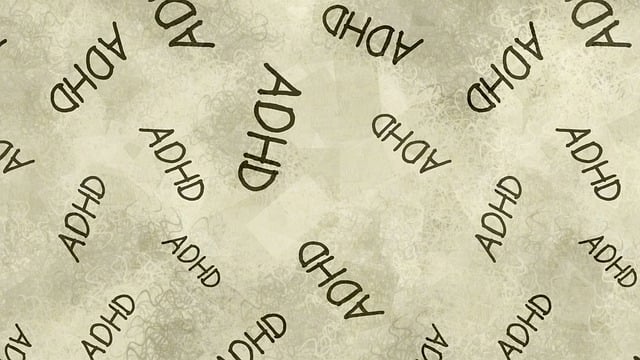Broomfield Adolescent and Teen Therapy prioritizes client safety through comprehensive risk assessment, identifying emotional triggers and past traumas. Their harm minimization strategy includes tailored interventions, proactive planning, and continuous evaluation, addressing diverse needs with evidence-based practices. By collaborating with trauma support services and providing cultural competency training, they create a holistic environment for adolescents to explore complex emotions securely. Through structured assessments, open communication, and innovative programs like Mental Wellness Coaching, Broomfield Adolescent and Teen Therapy empowers young individuals to overcome challenges with confidence and hope.
Risk assessment and harm minimization are crucial aspects of ensuring safety and well-being in Broomfield Adolescent and Teen Therapy. This comprehensive guide delves into three key areas: understanding risk assessment, implementing harm minimization strategies, and the importance of continuous evaluation. By identifying potential hazards and adopting a proactive approach, therapists can create a secure environment that fosters growth and development for young individuals. Regular review processes ensure practices remain up-to-date, effective, and aligned with best standards in youth therapy.
- Understanding Risk Assessment: Identifying Potential Hazards in Adolescent Therapy
- Implementing Harm Minimization Strategies: A Comprehensive Approach for Broomfield Adolescent and Teen Therapy
- Continuous Evaluation and Adaptation: Ensuring Safety and Well-being Through Regular Review in Youth Therapy Practices
Understanding Risk Assessment: Identifying Potential Hazards in Adolescent Therapy

Risk assessment is a crucial step in Broomfield Adolescent and Teen Therapy, enabling therapists to identify and mitigate potential hazards that may impact a client’s well-being during therapy. It involves a thorough examination of various factors within the therapeutic environment, including the physical space, client background, and existing mental health conditions. By understanding these risks, therapists can develop tailored strategies to minimize harm and ensure a safe, supportive atmosphere.
In adolescent therapy, potential hazards may include emotional triggers, past traumas, or even external stressors such as family dynamics and peer pressure. For instance, a therapist might assess whether a client’s history with substance abuse poses a risk during sessions, requiring additional measures like structured group settings or referral to specialized support services. Broomfield Adolescent and Teen Therapy prioritizes the implementation of a Community Outreach Program to address these issues, combining Mind Over Matter principles with ongoing Healthcare Provider Cultural Competency Training to effectively navigate diverse client needs.
Implementing Harm Minimization Strategies: A Comprehensive Approach for Broomfield Adolescent and Teen Therapy

Implementing harm minimization strategies is a comprehensive approach essential for Broomfield Adolescent and Teen Therapy to effectively support young clients. This involves a multi-faceted strategy that includes tailored interventions, proactive risk management planning, and a strong therapeutic alliance. By integrating these strategies into their practice, therapists can create a safe and supportive environment, enabling adolescents to explore sensitive topics and process complex emotions without fear of exacerbating existing risks or triggering new ones.
A key component of this approach is the collaboration between mental health professionals, trauma support services, and healthcare provider cultural competency training. This holistic perspective ensures that every individual’s unique needs are addressed, promoting positive outcomes and fostering resilience among adolescent clients. Through rigorous risk management planning, Broomfield Adolescent and Teen Therapy can confidently navigate complex cases, providing evidence-based interventions while upholding the highest standards of safety and care.
Continuous Evaluation and Adaptation: Ensuring Safety and Well-being Through Regular Review in Youth Therapy Practices

In the dynamic field of youth therapy, continuous evaluation and adaptation are paramount to maintaining a safe and supportive environment for adolescents and teens. At Broomfield Adolescent and Teen Therapy, we recognize that young minds and emotions are ever-evolving, necessitating regular review and adjustment of harm minimization plans. This proactive approach ensures that our therapy practices remain relevant, effective, and tailored to the unique needs of each individual. By implementing structured assessment protocols and fostering open communication, we can identify emerging risks or changes in mental wellness early on, allowing for swift interventions through innovative strategies like Mental Wellness Coaching Programs Development.
Regular evaluation involves not only assessing risk factors but also celebrating progress and incorporating self-care practices into our therapeutic framework. This holistic perspective encourages clients to actively participate in their healing journey while fostering resilience. Moreover, community outreach program implementation plays a crucial role in extending support beyond the therapy setting, creating a network of resources that promotes sustained well-being. Through these continuous evaluation processes, Broomfield Adolescent and Teen Therapy remains committed to delivering exceptional care, ensuring that every young person receives the guidance they need to navigate life’s challenges with confidence and hope.
Risk assessment and harm minimization planning are essential components of providing safe and effective therapy for adolescents. By identifying potential hazards, implementing comprehensive strategies, and continuously evaluating practices, professionals in Broomfield Adolescent and Teen Therapy can ensure the well-being and success of their young clients. Regular review and adaptation are key to navigating the unique challenges faced by teenagers, fostering a nurturing environment that promotes growth and healing.














